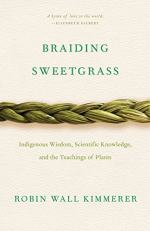
|
| Name: _________________________ | Period: ___________________ |
This test consists of 15 multiple choice questions and 5 short answer questions.
Multiple Choice Questions
1. What does South represent to the author's people?
(a) Death and grief.
(b) Ancient knowledge.
(c) Community.
(d) Birth and growth.
2. To whom is the following quote attributed in "Burning Cascade Head"? "“The dance of renewal, the dance that made the world, was always danced here at the edge of things, on the brink, on the foggy coast" (288).
(a) Ursula K. Le Guin.
(b) Lewis Hyde.
(c) Paula Gunn Allen.
(d) Bruce King.
3. What term refers to fields with many species of plants?
(a) Bicultures.
(b) Polycultures.
(c) Agricultures.
(d) Omnicultures.
4. What do the author and her neighbors call the one gas station in her community, according to the narrative in "Maple Nation: A Citizenship Guide"?
(a) The Hilltop 66.
(b) The Bazaar.
(c) The DC Store.
(d) The Pompey Mall.
5. According to the beliefs of the author's people, what does East represent?
(a) Knowledge.
(b) Sorrow.
(c) Love.
(d) Community.
6. What did Laurie's finding show happened with harvested sweetgrass in her graduate thesis?
(a) Harvesting by snapping leaves harms production.
(b) Harvested sweetgrass does not flourish.
(c) Harvested sweetgrass thrives well.
(d) Harvesting by root-pulling destroys sweetgrass populations.
7. What is the word used to mean South in the author's native language?
(a) Puhpowee.
(b) Makaks.
(c) Wabunong.
(d) Zhawanong.
8. When does the author describe "a tsunami of disease" sweeping the Oregon coast in "Burning Cascade Head" (293)?
(a) The 1830s.
(b) The 1850s.
(c) The 1890s.
(d) The 1880s.
9. Beginning in what year did the U.S. Forest Service and partner organizations led by Oregon State University initiate a restoration project for the estuary at the Salmon River in Oregon?
(a) 1982.
(b) 1990.
(c) 1945.
(d) 1976.
10. What grew from Skywoman's daughter's belly after she was buried in the earth?
(a) Onions.
(b) Beans.
(c) Corn.
(d) Squash.
11. What grew from Skywoman's daughter's head when she was buried in the earth, according to the author in "Epiphany in the Beans"?
(a) Onions.
(b) Tobacco.
(c) Sweetgrass.
(d) Wild strawberries.
12. Where was the Carlisle Indian Industrial School located?
(a) New Hampshire.
(b) Texas.
(c) Pennsyvania.
(d) Connecticut.
13. What is the scientific name of the common plantain?
(a) Hierochloe odorata.
(b) Carya illinoensis.
(c) Plantago major.
(d) Juglandaceae.
14. What Swedish botanist does the author reference in "In the Footsteps of Nanabozho: Becoming Indigenous to Place"?
(a) Carl Peter Thunberg.
(b) Elias Magnus Fries.
(c) Carl Linnaeus.
(d) Olof Swartz.
15. What were the three seeds in the corn leaf pouch that were given to the author in "The Three Sisters"?
(a) Tobacco, chives, and beans.
(b) Beans, squash, and onions.
(c) Sweetgrass, potatoes, and corn.
(d) Corn, beans, and squash.
Short Answer Questions
1. What does the second row represent in the author's metaphor for basket weaving in "Wisgaak Gokpenagen: A Black Ash Basket"?
2. What grew from the heart of Skywoman's daughter, according to the author in "Epiphany in the Beans"?
3. What is the Anishinaabe new year, or Maple Sugar Moon called, among the author's people?
4. To what clan is Tom Porter a member, according to the author in "Putting Down Roots"?
5. What is the name of the process in a bean shoot in which the vine inscribes a circle in the air?
|
This section contains 499 words (approx. 2 pages at 300 words per page) |

|




